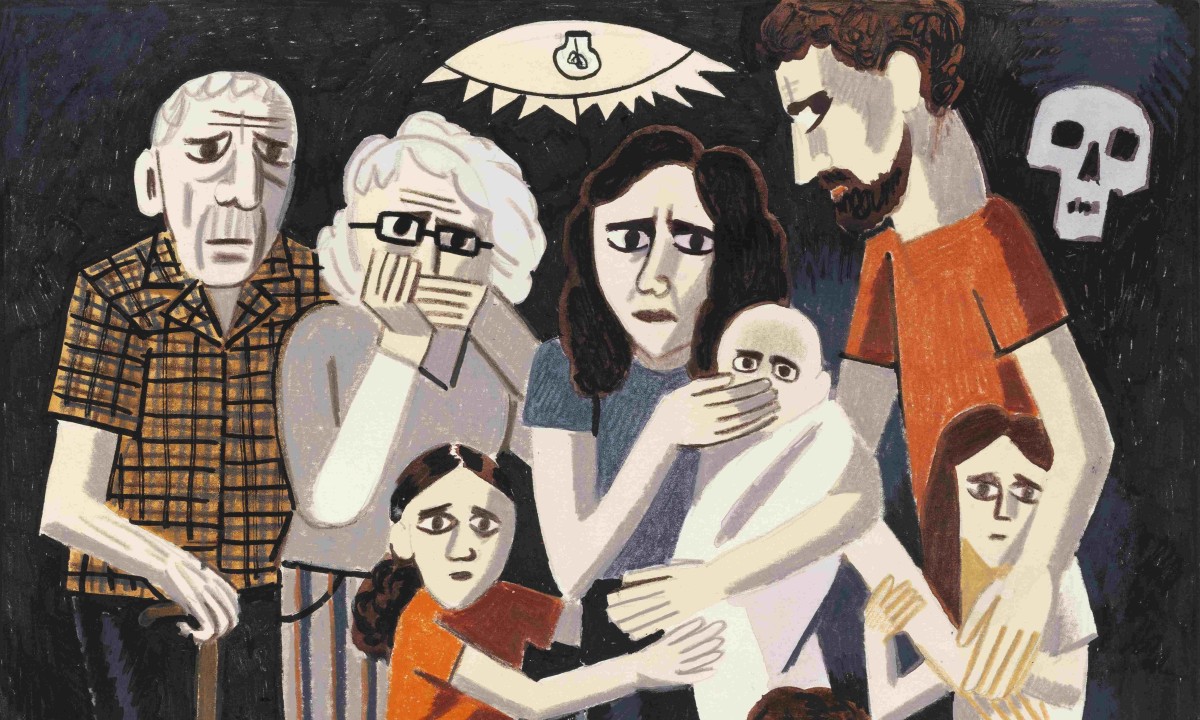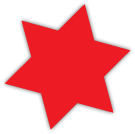In other pictures in the series, the artist quotes Edvard Munch’s The Scream and Giotto’s Massacre of the Innocents. “I use the collective memory of an artist to talk about these events,”3 says Cherkassky-Nnadi. She embeds the suffering and humanitarian disaster of October 7, 2023, in an intellectual and art historical context that underlines the attack’s universal significance far beyond Israel’s borders.
October 7, 2023
Zoya Cherkassky-Nnadi began to paint just four days after the attack. Her works on October 7 show an “Israeli Guernica,” as the artist herself calls it—a reference to Pablo Picasso’s monumental painting depicting the horrors of the German-Italian air raid on the Spanish city of Guernica (Basque: Gernika) on April 26, 1937, during the Spanish Civil War. The bombardment, carried out by the Condor Legion, which served with General Franco’s fascist troops, did not have a military objective but was designed merely to demoralize the civilian population. One third of the inhabitants were killed or injured in the attack. Picasso wrote at the time: “It is my wish at this time to remind you that I have always believed, and still believe, that artists who live and work with spiritual values cannot and should not remain indifferent to a conflict in which the highest values of humanity and civilization are at stake.”1
Cherkassky-Nnadi was inevitably reminded of Picasso’s Guernica after the reports about the attack on the Be’eri kibbutz: “Because it’s so similar: it’s just a massacre of innocent people. And something that we didn’t believe could happen in Israel, and in such a brutal way.”2 The first work in the series shows an Israeli family – children, parents, and grandparents—with fear and horror inscribed in their faces. The picture suggests that the family is hiding from the attackers. The ceiling light is a direct reference to Guernica, emphasizing the parallels between the two motifs.
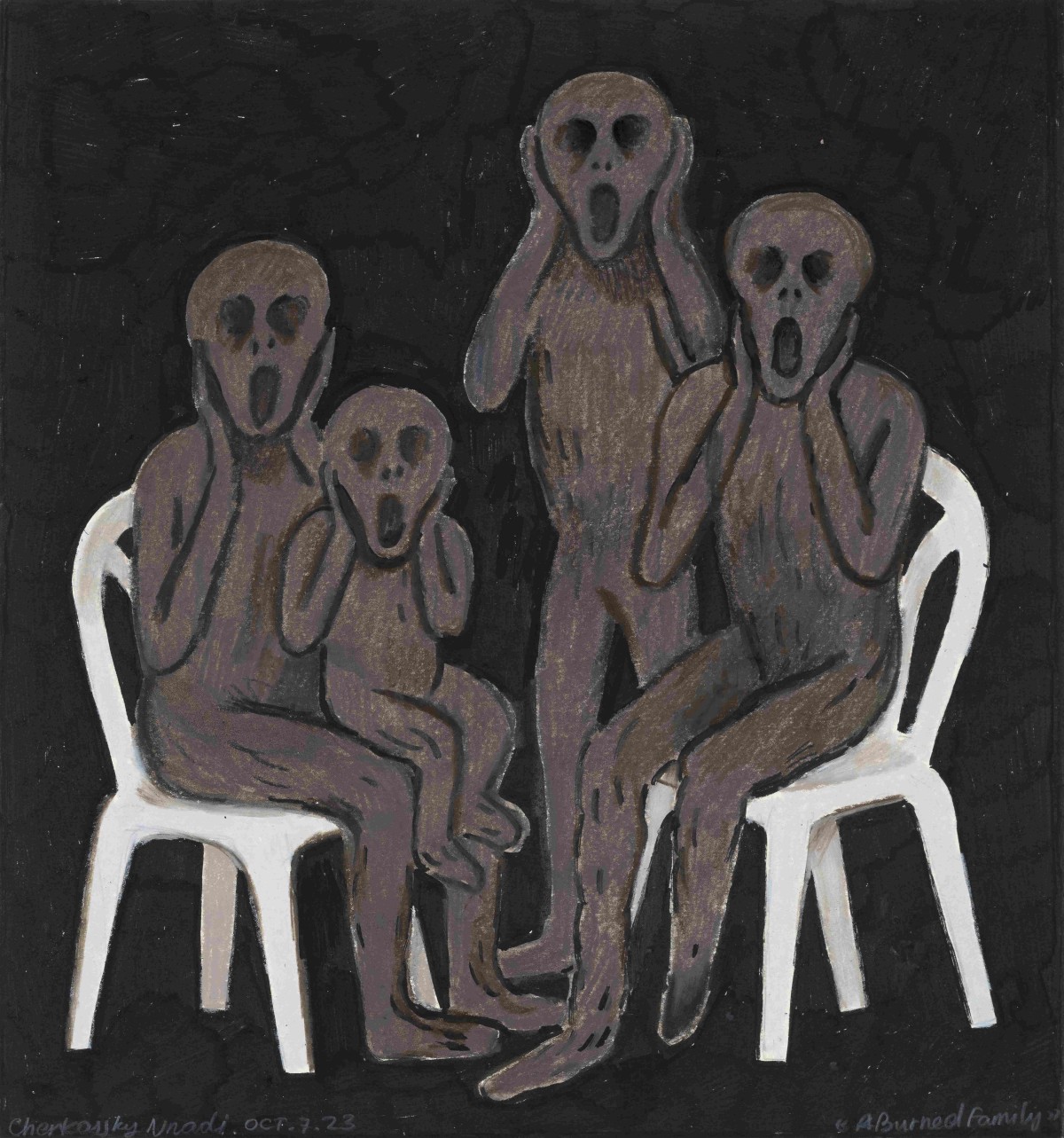
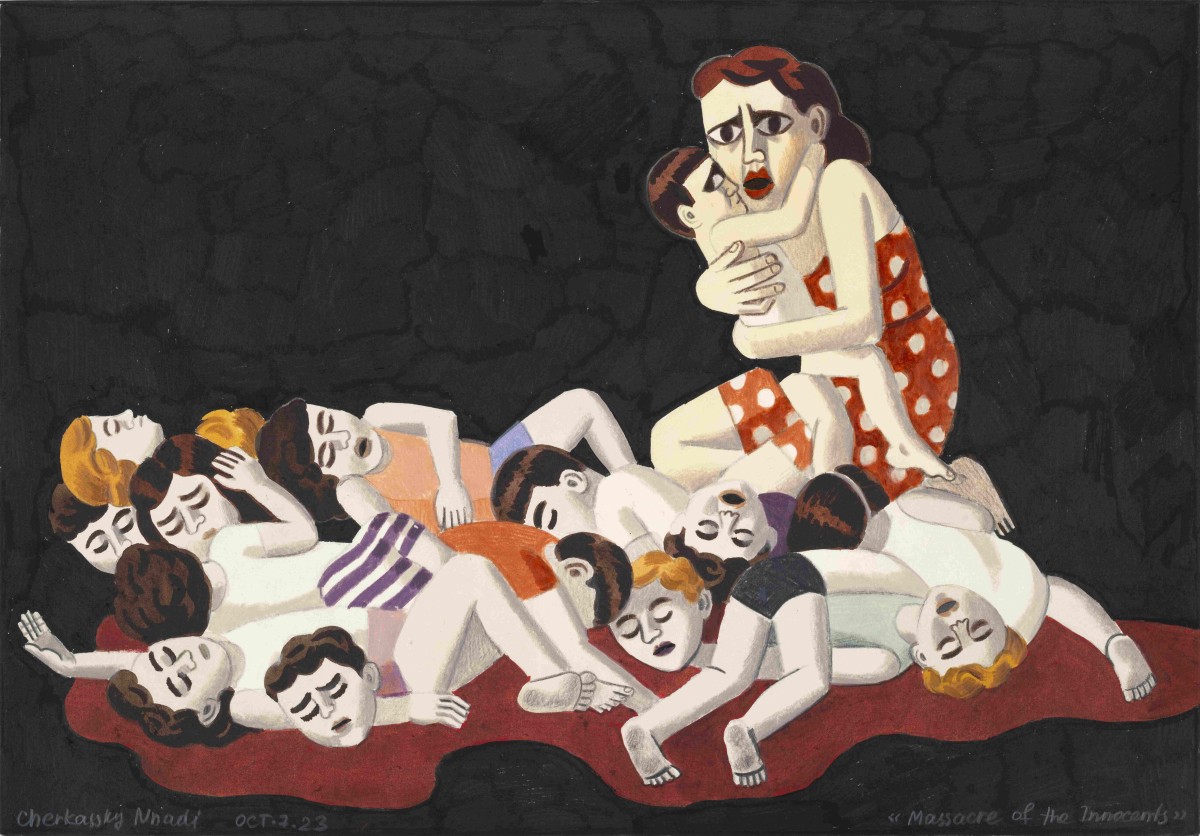

Other works in the series, which also contain references to Käthe Kollwitz, deal with specific events on October 7, for example the attack on the Nova Festival or the abduction of a dozen children to Gaza. Cherkassky-Nnadi also seeks to focus on the (sexualized) violence against women: “I think women [suffer] particularly brutal treatment during war. Especially in this particular attack.”4 One work from the series, entitled Raped and Butchered, shows a raped and murdered woman. Another has a group of kidnapped women, including a Holocaust survivor, recognizable from the number tattooed on her forearm.
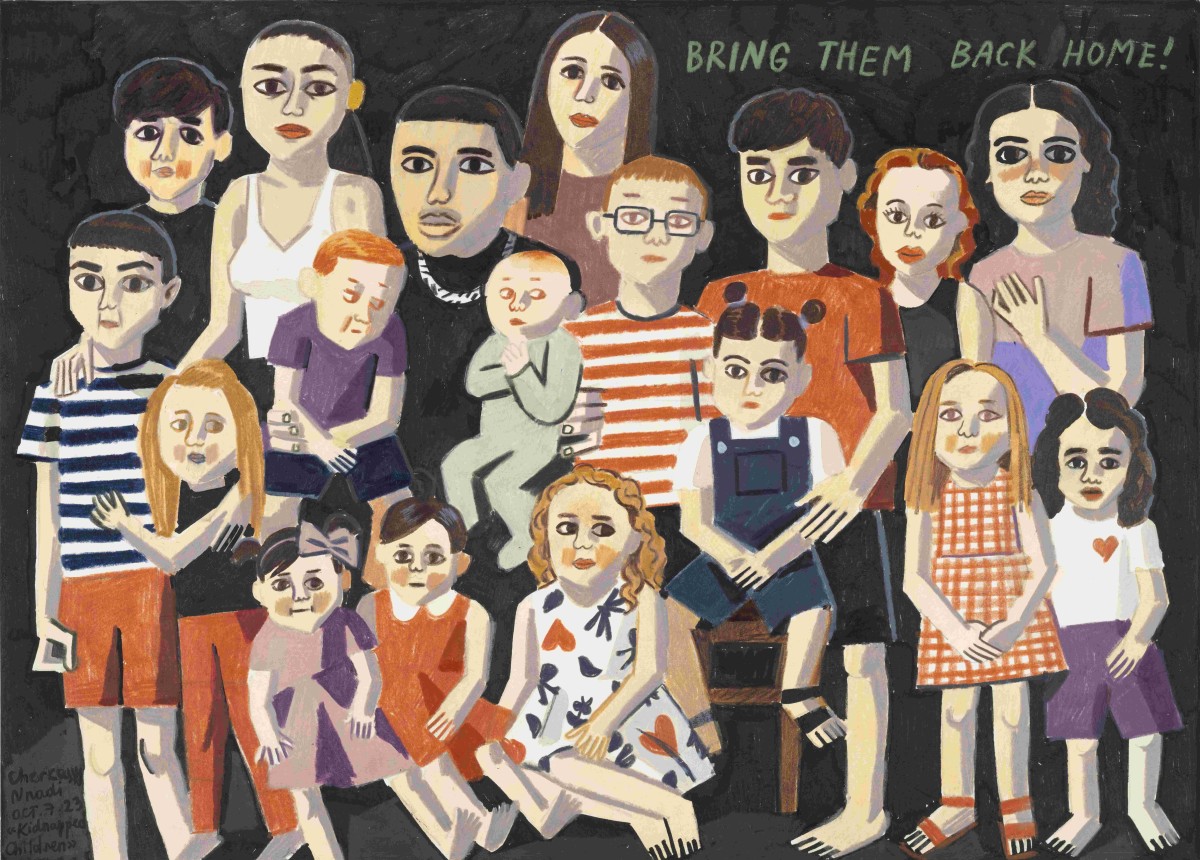
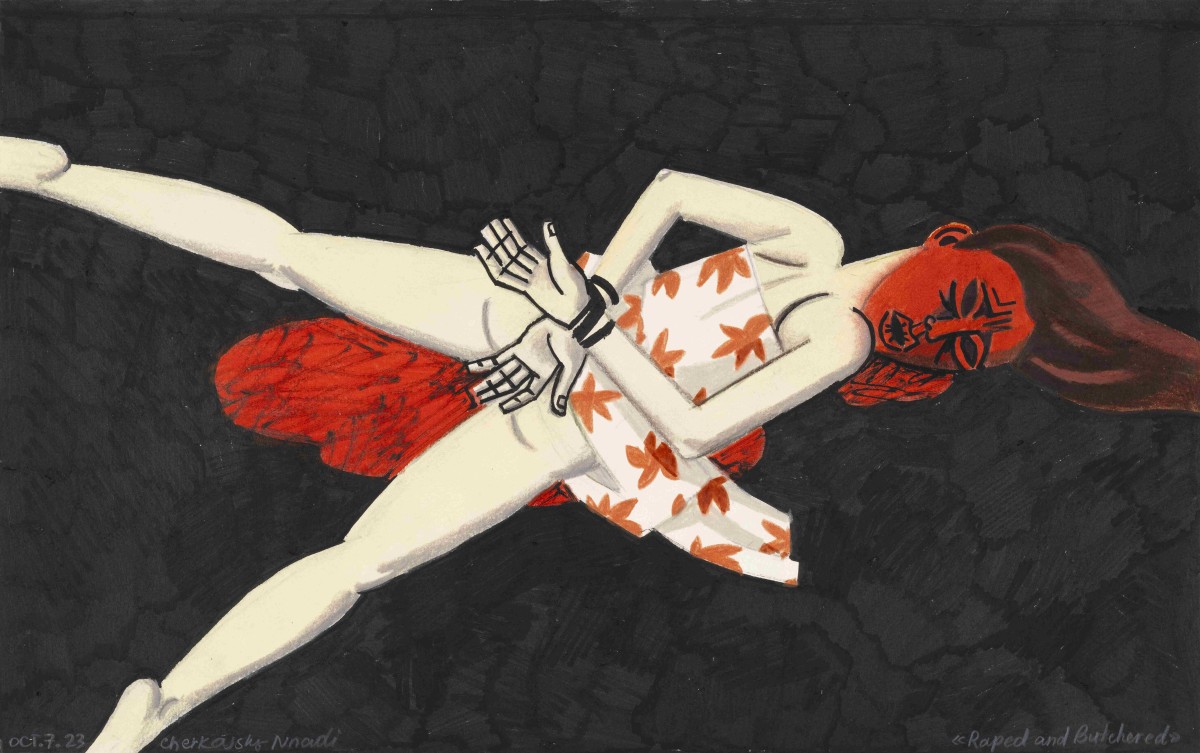
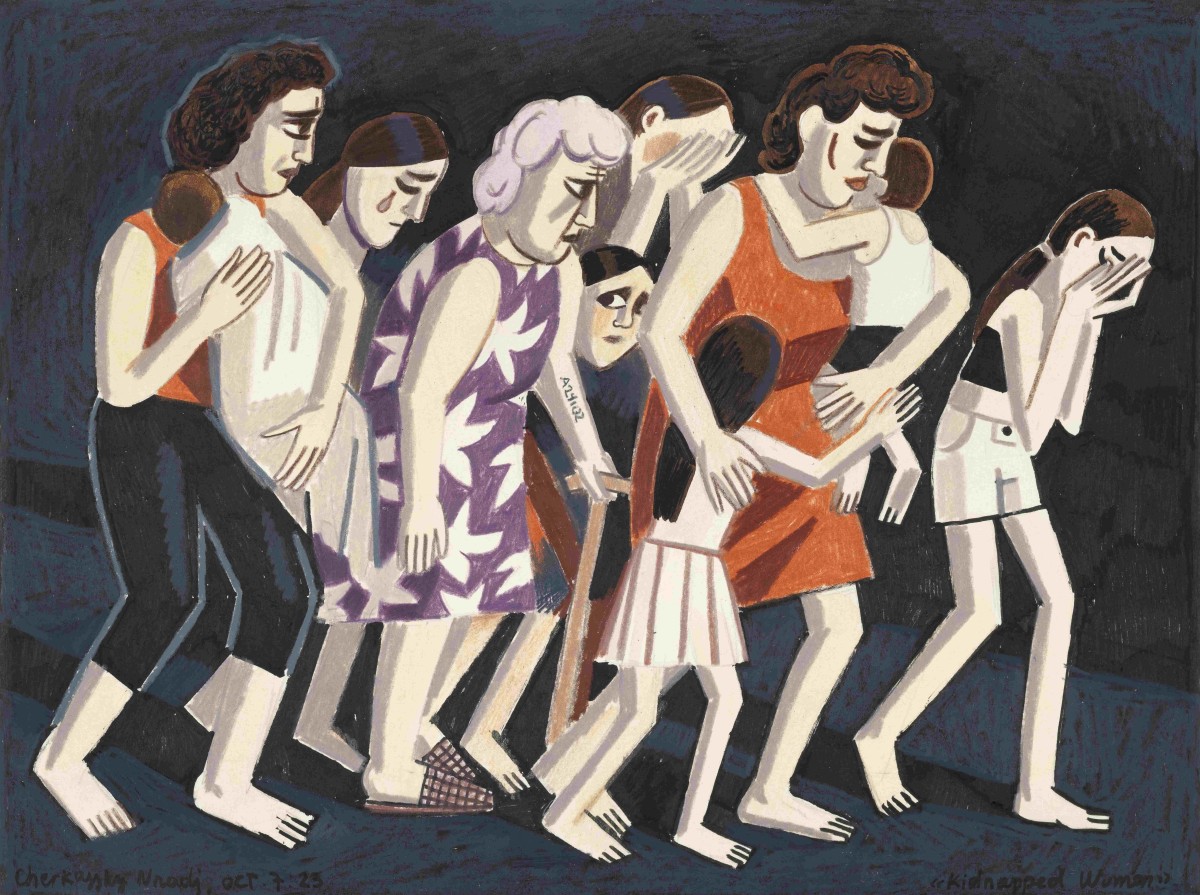
All of the pictures in the series are dated October 7 and concern this day. “It is not about analysis nor about everything that has happened in Gaza since, but about this particular tragedy on October 7,”5 says the artist.
Zoya Cherkassky-Nnadi already addressed the themes of violence, war, and their consequences in connection with the Russian invasion of Ukraine. Born in Kyiv in 1976, she emigrated with her family to Israel in 1991, shortly before the disintegration of the Soviet Union. In her series Soviet Childhood she reminisces years later about her past. After the Russian invasion of Ukraine in February 2022, she began to process her impressions of the war and repainted some of her earlier scenes. In the series Before and After, she places selected Soviet Childhood pictures side by side with newer versions. The series shows how memories can change through war. One of these parallel pictures can be seen in our temporary exhibition Peace at Museum Judenplatz.
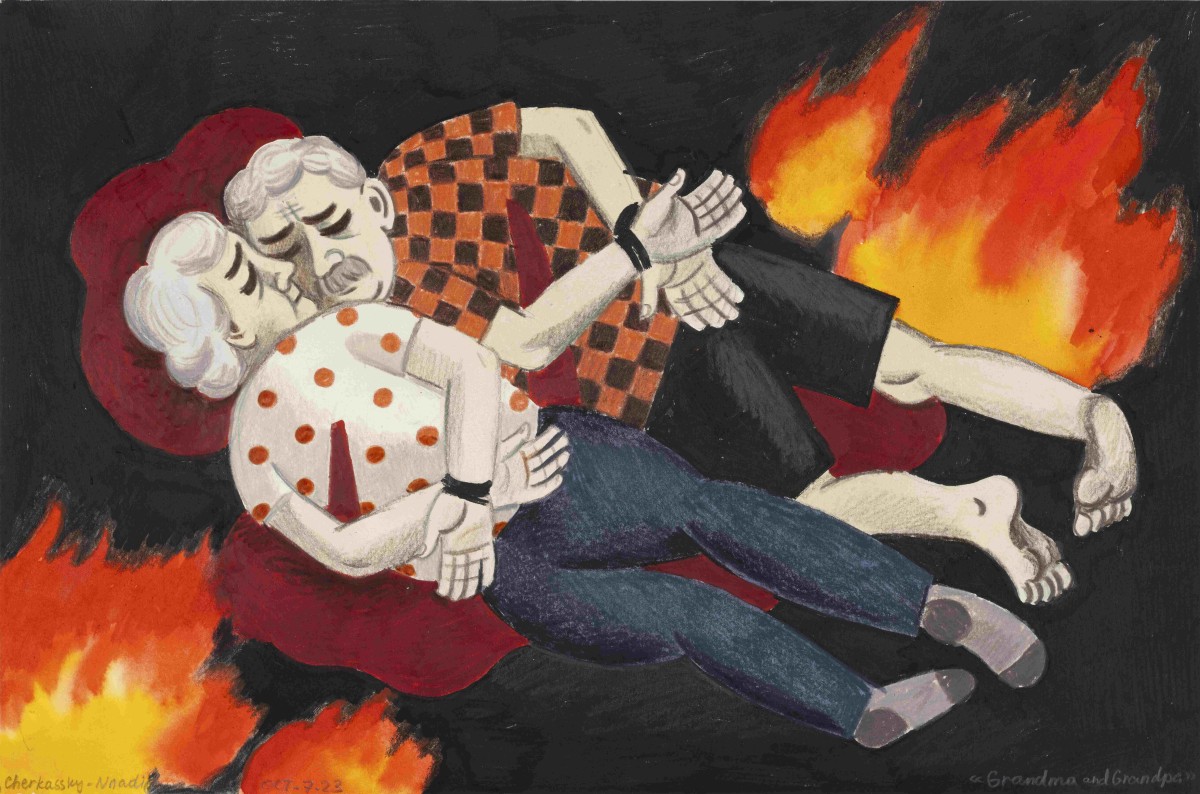
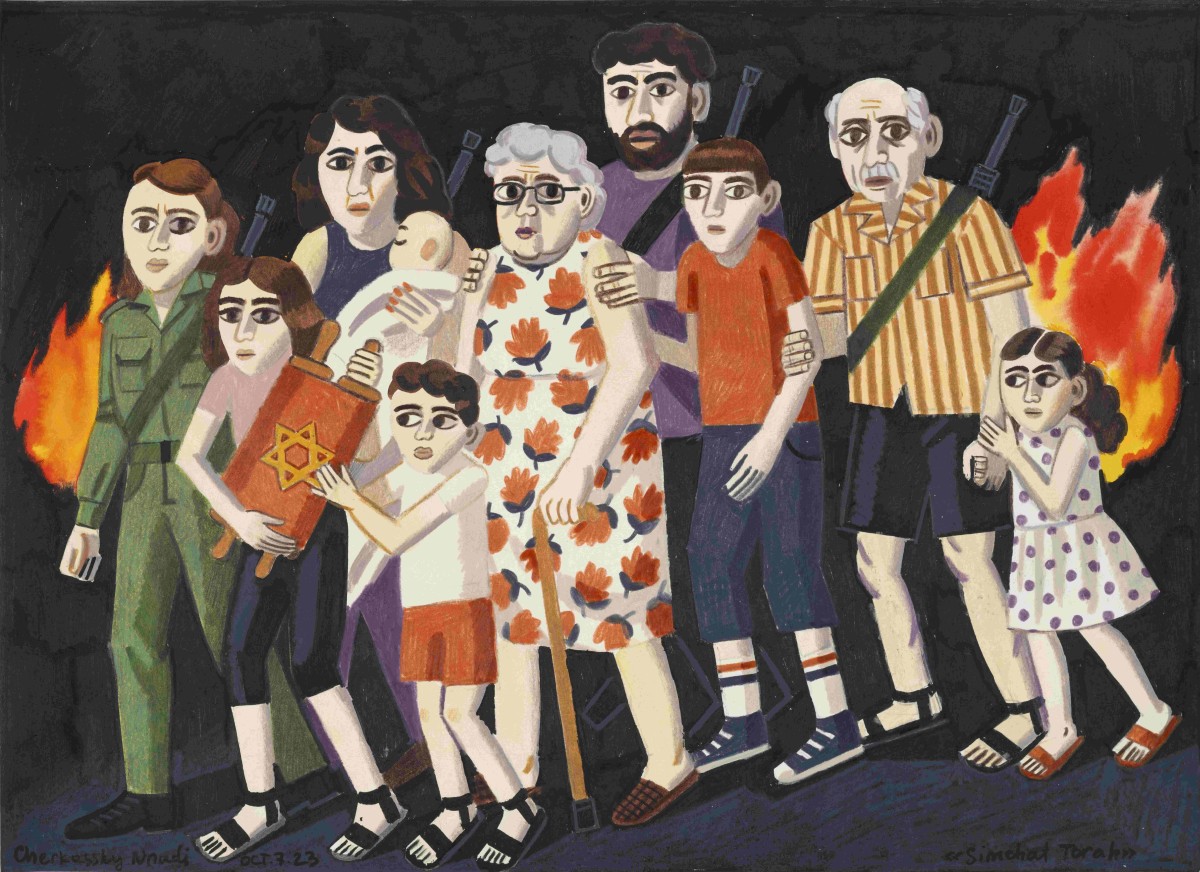
The artist states that the current series on October 7, 2023, is aimed at the people in Israel in recognition of their suffering and may be understood as a “requiem.”6 As a fierce critic of the current Israeli government and in keeping with her left-wing principles, the artist also addresses the international art scene, voicing her disappointment at its reaction of simply ignoring the October 7 massacre. The artistic community justifies the crimes committed by Hamas by uncritically adopting the classic anticolonial stance, automatically siding with the suppressed people, and expressing solidarity with the Palestinian civilian population.7
The series October 7, 2023, which Cherkassky-Nnadi published initially on her social media sites, is an attempt through art to heighten the awareness of as many people as possible outside Israel as well of the brutal attack and to prevent it from being forgotten. The pictures bear witness to the tragic turning point that October 7, 2023, representsnot only for Israel but also for Jewish communities and Jewish life worldwide.
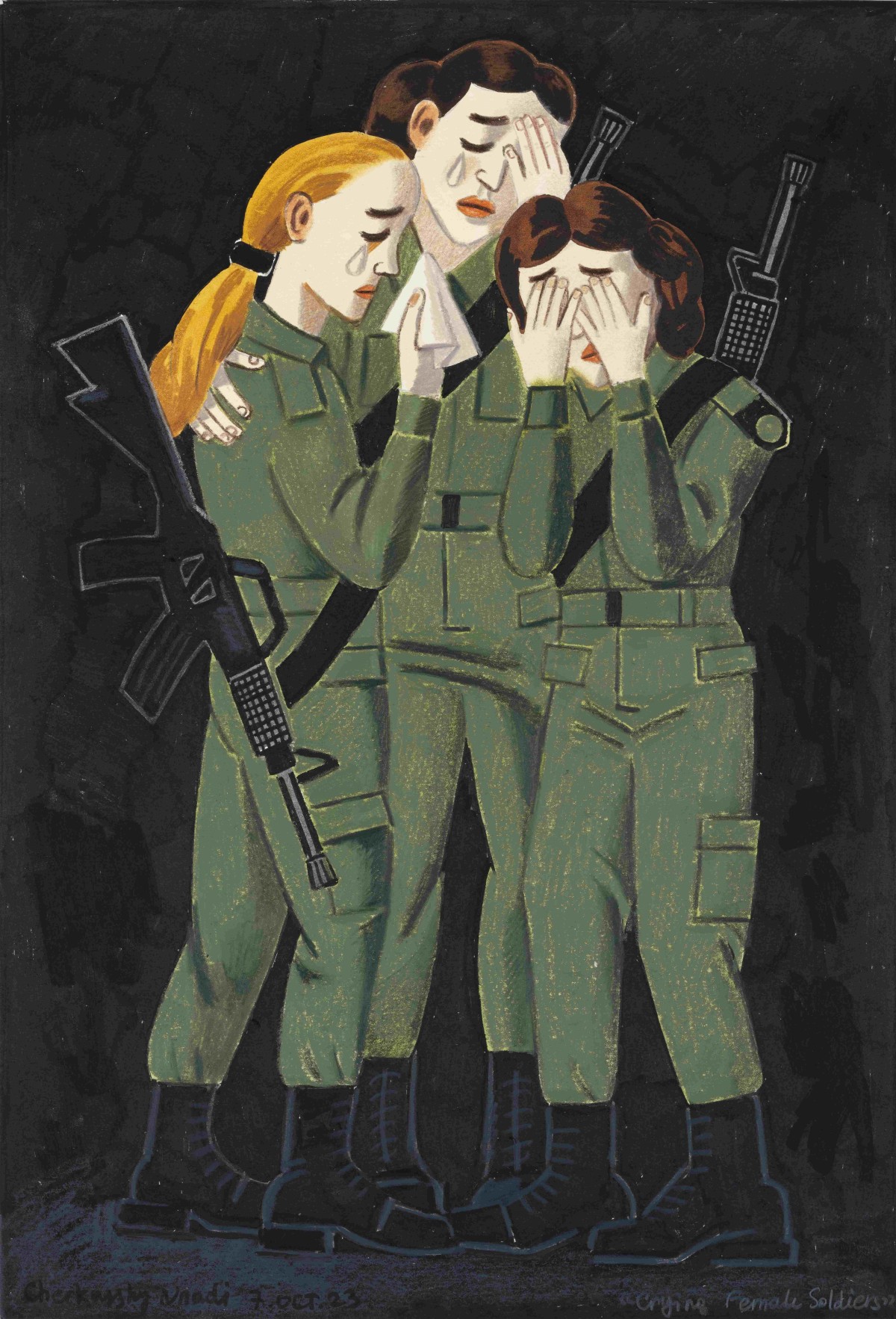
Translation: Nick Somers
